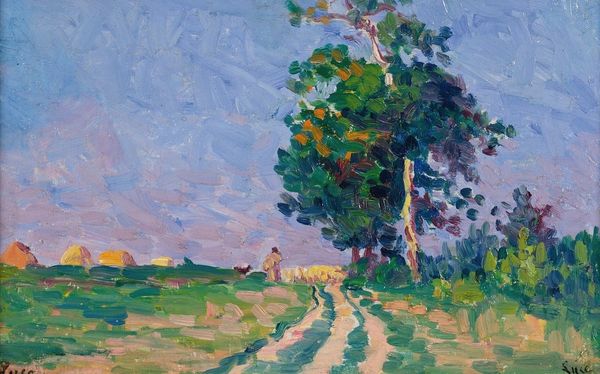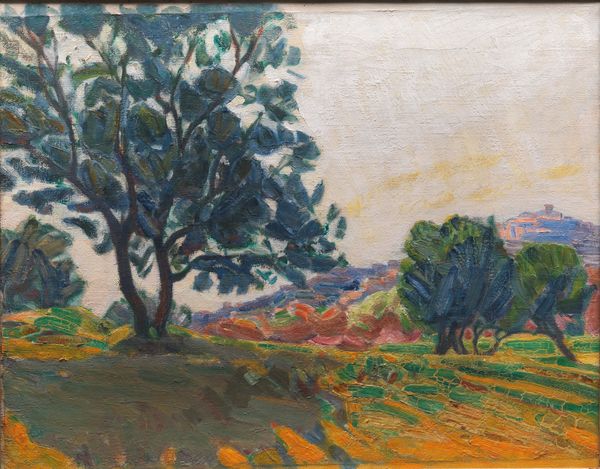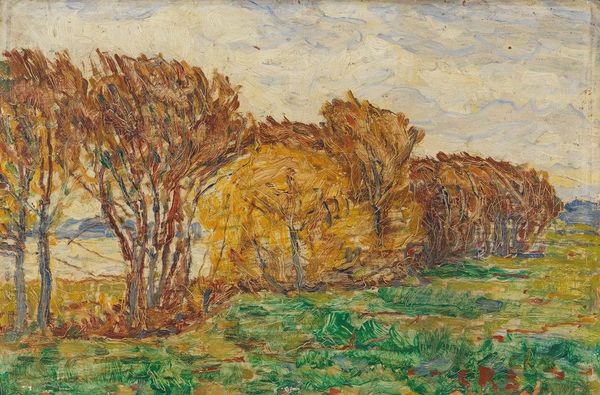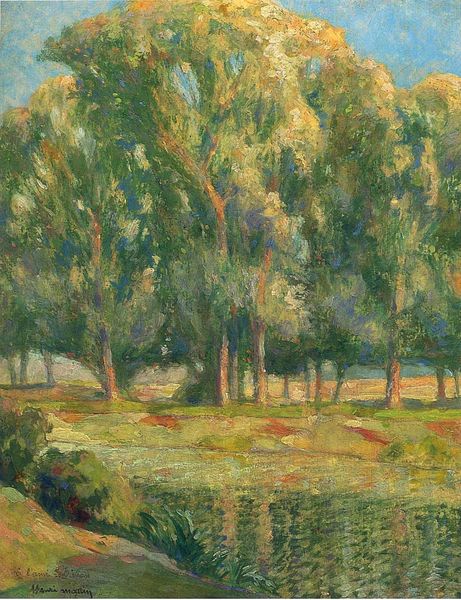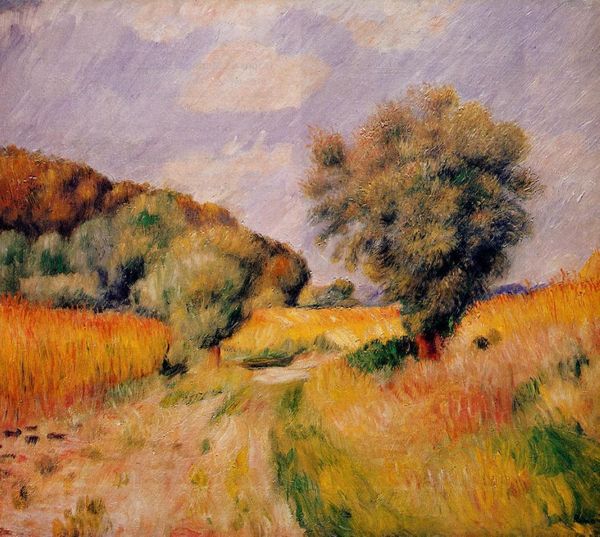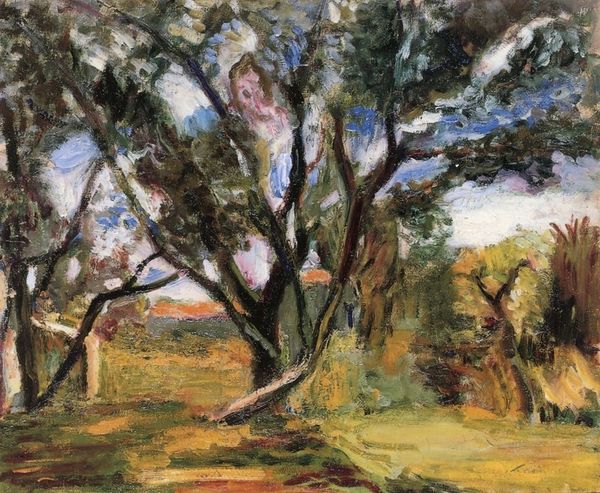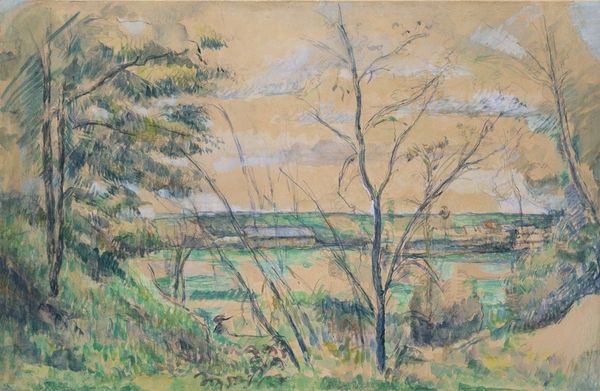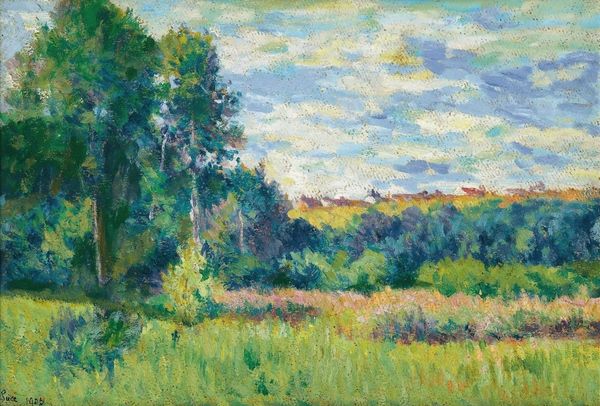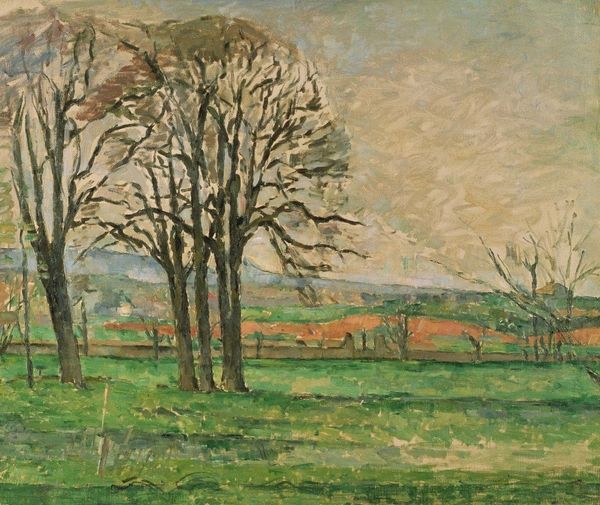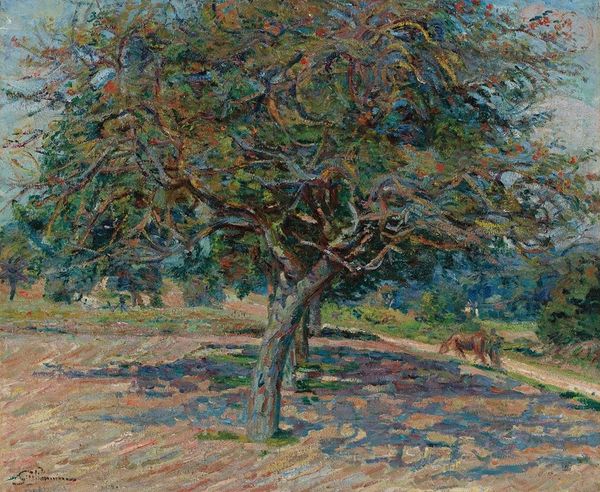
painting, plein-air, oil-paint
#
painting
#
impressionism
#
plein-air
#
oil-paint
#
landscape
#
oil painting
Copyright: Public Domain: Artvee
Editor: We're looking at "Paysage boisé," a landscape created around 1890 by Armand Guillaumin, rendered in oil paint. It’s… surprisingly earthy. I mean, Impressionism usually sings with light, but this palette feels almost autumnal, focusing on the textures. What do you see in this piece, with its almost subdued Impressionistic technique? Curator: Indeed. Consider first the application of paint. Guillaumin employs a broken brushstroke technique. Note how colour is not blended smoothly but rather applied in discrete touches. Observe, for instance, the juxtaposition of greens and oranges which are separate and meant to coalesce in the eye of the beholder. This approach lends a remarkable vibrancy to the scene, and what results is a unique engagement with visual phenomena. Editor: That’s true. It feels like he’s breaking down the landscape into color components. Is he trying to portray the optical sensations of light, more than accurately representing what is in front of his eyes? Curator: Precisely! Semiotically, the trees don't merely denote 'tree', but represent bundles of colours and shadows. Consider also, how the bare tree on the left acts as a framing device, drawing our vision into the canvas’s deeper pictorial space. Does that influence how you read the painting? Editor: Yes, definitely! It almost seems to invite us to ponder nature not as something simply 'seen', but something structurally decoded through light, form, and the very act of painting. I hadn’t noticed how effectively that tree was guiding my sight. Curator: And through that structural device, we find something more profound in this landscape, don’t you think? Editor: Absolutely. Thanks. It seems that going beyond an immediate feeling can unlock something very insightful, hidden in the structures, too.
Comments
No comments
Be the first to comment and join the conversation on the ultimate creative platform.
